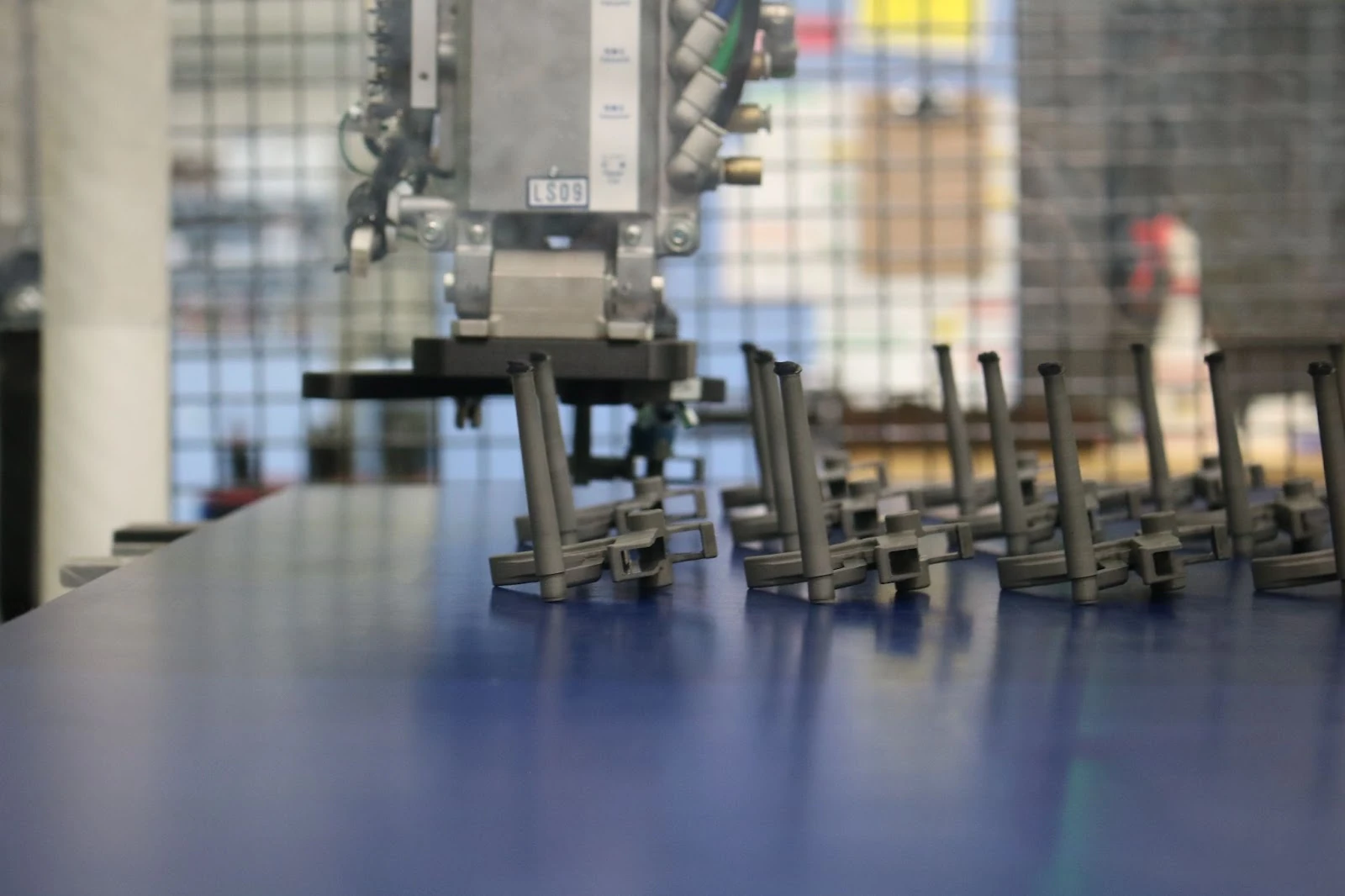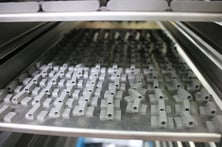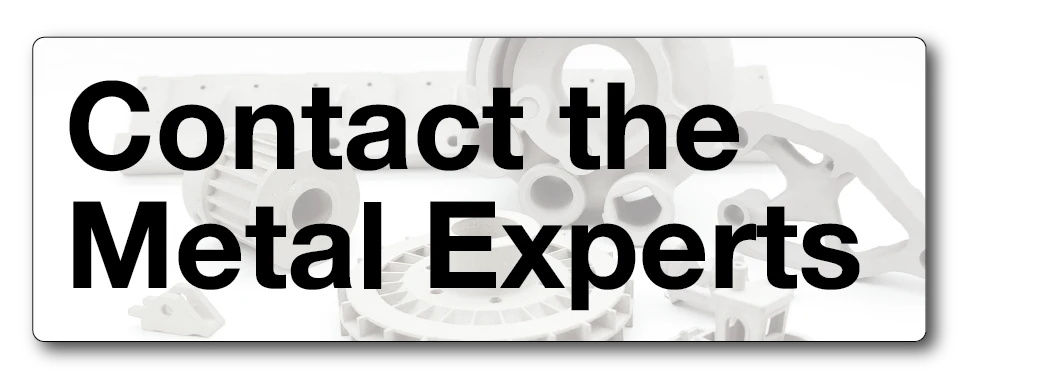
The Metal Injection Molding Process: A Comprehensive Guide
Plastic injection molding offers incredible design flexibility.
Fabricating with metal results in parts and components that are extremely durable.
When you combine the two, you end up with a process unlike any other – the metal injection molding (MIM) process.
Leveraging the advantages of plastic injection molding and metallurgy, MIM is an ideal manufacturing solution for a wide variety of applications.
In This Article…We’ll explore the metal injection molding process from start to finish, looking at:
|
A Closer Look: What is Metal Injection Molding?
MIM is a variation of plastic injection molding, that is ideal for high-volume, small metal components with thin walls and fine details. Metal injection molding has very few restrictions on design, with the capability to produce extremely complex parts.
While MIM can create highly repeatable parts, the process itself is fairly simple.
4 Steps of the Metal Injection Molding Process
While there are many design factors to take into consideration, the MIM process can be broken down into four steps:
- Prepare the feedstock
- Injecting the mold
- Binder removal
- Sintering
1. Prepare the Feedstock
In the metal injection molding process, materials and alloys are broken down into metal powder and then mixed with a binder to create the feedstock.
Typically, the binder is a thermoplastic polymer allowing the feedstock to take shape, and the powder varies depending on the desired properties of the final molded product. Once you have the blended mixture, the feedstock is ready to be injected.
2. Injecting the Mold
The feedstock is injected into the mold cavity under high pressure to form the final component. The cavity should be designed with 20% extra capacity to account for part shrinkage during sintering (more on this later).
Once the feedstock is injected, it’s left to cool and solidify and then removed from the mold. This newly created piece is known as the “green” part.
3. Binder Removal
In the first step, the binder was mixed with metal powder to create the feedstock. Now after the feedstock has been injected into the mold cavity, the binder needs to be removed from the metal. The debinding can happen in two ways:
- Solvent debinding, which is when the “green” part is put through a chemical bath to dissolve the binder.
- Thermal debinding, where the “green” part is put through a low-temperature oven and heated just enough to remove the binder via evaporation.
Thermal debinding is typically inexpensive, but has a lengthy processing time – solvent debinding, is more consistent and quick, with the only downside being it’s not as eco-friendly as other methods. Whether through solvent or thermal debinding, the part is now prepared for the final step – sintering. At this point, the part is now referred to as a “brown” component.
4. Sintering
 At this step in the metal injection molding process, the now brown part is very fragile and only held together by a small, remaining amount of binder. It’s then placed into a high-heat furnace with temperatures near its melting point and the remaining binder is removed, fusing the particles together.
At this step in the metal injection molding process, the now brown part is very fragile and only held together by a small, remaining amount of binder. It’s then placed into a high-heat furnace with temperatures near its melting point and the remaining binder is removed, fusing the particles together.
The part can shrink by upwards of 20% or more, densifying the remaining part, and achieving a part density of 95-98%, and the final strength and structure are formed.
When is Metal Injection Molding Right for the Job?
While MIM has many advantages to the process, there are several capabilities that are commonly overlooked:
- The ability to reliably create parts with complex geometries requiring little to no post-processing
- Creating quality, end-use parts with tight tolerances
- Remaining a highly cost-efficient metallurgical choice
While thin walls are common in plastic injection molded parts, it's not a common feature in metal parts. However with MIM, parts can be produced with thin walls and complex shapes.
In addition to high durability, MIM also produces quality, precise parts. The MIM process is highly repeatable, so each part comes out exactly the same. This is crucial when producing in high volumes so each part meets the desired requirements.
Why choose MIM over competing methods that can produce precise parts?
Efficiency.
Without sacrificing quality, MIM remains relatively inexpensive and efficient looking at the long-term benefits. Up front, MIM may require an investment due to the cost of the molding machine, mold tool, and other parts needed. However, MIM produces in high volume, so your return on investment happens in a very short time.
How is MIM Used Today?
With all the advantages metal injection molding has to offer, it’s commonly used in many applications from the medical industry to the agricultural field, to even in your daily consumer items.
MIM is frequently used in the medical industry to produce precise medical devices such as:
- Surgical instruments
- Orthopedic implants
- Hip replacements
- Dental crowns and implants
As mentioned above, metal injection molding takes on the design flexibility of plastic, but the durability of metal, which is highly sought after in the medical industry – as well as the agricultural field. MIM is used in many agricultural applications from tractor parts to pruning shears.
Aside from uses in agriculture, objects produced by metal injection molding are probably used in your daily routine. Since MIM specializes in producing high-volume, small complex parts, cell phones, and electronic devices typically contain these components.
Working with a Metal Injection Molding Specialist
Metal injection molding can be used across a wide range of materials to create your perfect component.
Even though investing in MIM can be a complex, in-depth process – getting started with the investment will be worth the return in the end.
Start Your Next Project
When considering metal injection molding for your production, it’s best to consult with an expert to ensure it’s the best fit. Book time with one of ours today:

